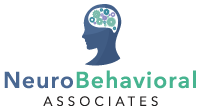Experiencing a traumatic brain injury is a life changing event. Studies have shown that just under half of people who experience a TBI return to former jobs, but many who return to the workforce ultimately find those former jobs too difficult to continue longterm.(1) Changing careers after experiencing a TBI is an understandable and common need for many individuals.
A traumatic brain injury, which can be caused by anything from a car accident to a bad fall, often leaves complications that can last for years or be lifelong. Each person in recovery from a traumatic brain injury has a completely different experience from someone else in recovery. However, survivors of TBI commonly experience certain key symptoms (2) for an uncertain period of time following their injuries, including:
- Problems with memory, ability to focus, and attention
- Difficulty with decisions and planning
- Problems with eyesight, body awareness (resulting in apparent clumsiness), spatial awareness, or the use of previously familiar work objects and tools.
- Social problems, including impulse control, self-control, communication differences, speech problems, frustration, and unexpected emotional outbursts.
- Physical problems, including exhaustion, migraines, and even seizures.
While this list of possibilities might seem overwhelming, it’s important to remember that the workforce is still absolutely available to employees recovering from traumatic brain injuries. In fact, the Americans with Disabilities Act requires employers to provide reasonable accommodations to employees returning to work following a traumatic brain injury.(2)
Returning to Work After a TBI
After a traumatic brain injury, employees have usually participated in a rehabilitation or other therapy program to relearn and regain essential life skills. The brain has remarkable healing abilities thanks to neuroplasticity,(3) the brain’s ability to make new changes in response to injury or other conditions. Often, even people who have experienced severe brain damage can go on to lead an enjoyable and productive life.
Returning to previously important and beloved work positions give traumatic brain injury survivors a strong sense of purpose and helps to rebuild self-esteem. When returning to work following a TBI, however, it’s important that employees have open and honest discussions with their employers. After a TBI, an employee will likely not be immediately ready for 40-hour work weeks or pre-injury workloads. Instead, employees should gradually return to employment. Stress can make the symptoms that follow a TBI more pronounced and diminish both the employee’s healing and the quality of work.(2)
Supporting Employees Who Have Experienced a Traumatic Brain Injury
The Mayo Clinic recommends a variety of supports for employees who are returning to work following a TBI.(2) Employees and employers should consider:
- The use of step-by-step calendars and planners.
- Cue cards or other memory aides and reminders, such as a detailed daily “to-do” list.
- The importance of “brain breaks,” or regularly scheduled time intervals away from work for the employee to mentally rest and recover from daily work tasks.
- Coming up with a written problem solving process for the employee to use as a reference.
Unfortunately, even with supports, many employees find that previously held positions no longer fit their new reality as a survivor of a TBI. They may find themselves too overly frustrated, fatigued, or in pain to continue in old positions. While this is another emotionally difficult moment on the path to healing after a traumatic brain injury, changing careers can ultimately be a positive and empowering choice for someone recovering from a TBI.
Things to Consider When Changing Careers
If you’ve had a TBI and feel your former position is no longer right for you, this realization doesn’t necessarily mean that you have to give up something that you love. Can you involve yourself in other ways with the workplace? Is there a way that you could volunteer a few hours a week with the organization or company, instead of maintaining your old career? Volunteering has also been noted by physicians to be a great way to reacclimate yourself to the work environment.(4)
If your former workplace can’t reasonably be apart of your future, then gently explore careers that feel more suited to where you are now. Friends and family may also be able to help you in your search. However, try not to rush into a career that doesn’t feel right for your health. Healing from a traumatic brain injury is a lifelong process and taking care of yourself should be your first priority. As you begin your new career journey, remember to:
- Get plenty of nightly rest and have good nutrition. Being well-rested and eating well will help your memory and focus levels to be at their best. You’ll also find the work environment to feel less draining.
- Exercise as often as possible. Research is introducing the possibility that exercise is healing for the brain,(5) but exercise also provides whole body benefits, including emotional benefits.
- Engage in activities that provide mental breaks, such as journaling, meditation, or yoga. The less stressed you feel, the more that you can focus on your new career change.(6)
Neurobehavioral Associates serves children and adults by providing complete neuropsychological assessments for people with attention and memory problems, as well as neurodevelopmental disorders. If you or a loved one is ready to return to work following a TBI, our assessments can help provide a pathway to the future. We also have a strong community referral network for our clients.
Contact our team today for information on how to schedule a comprehensive assessment at our Columbia, MD location.
Resources:
- van Velzen, J. M., van Bennekom, C. A. M., Edelaar, M. J. A., Sluiter, J. K., & Frings-Dresen, M. H. W. (2009, June). How many people return to work after acquired brain injury?: a systematic review. Retrieved October 15, 2019, from https://www.ncbi.nlm.nih.gov/pubmed/19484621.
- The Mayo Clinic. (2011). Understanding Brain Injury: A Guide for Employers. Retrieved October 15, 2019, from http://www.ndrn.org/images/Documents/webcats/mc1298.pdf.
- Su, Y. R. S. (2016). Neuroplasticity after Traumatic Brain Injury. Retrieved October 15, 2019, from https://www.ncbi.nlm.nih.gov/books/NBK326735/.
- Tricarico, E., Colino, S., & Lewis, L. L. (n.d.). TBI Survivors Share Their Journey Back to Work. Retrieved October 15, 2019, from https://www.everydayhealth.com/concussion/living-with/tbi-survivors-share-their-journey-back-work/.
- Can exercise help with traumatic brain injury treatment?: Brain: UT Southwestern Medical Center. (n.d.). Retrieved October 15, 2019, from https://utswmed.org/medblog/tbi-exercise/.
- Mindfulness, Meditation, and Prayer After Brain Injury. (2019, April 30). Retrieved October 15, 2019, from https://www.brainline.org/article/mindfulness-meditation-and-prayer-after-brain-injury.

